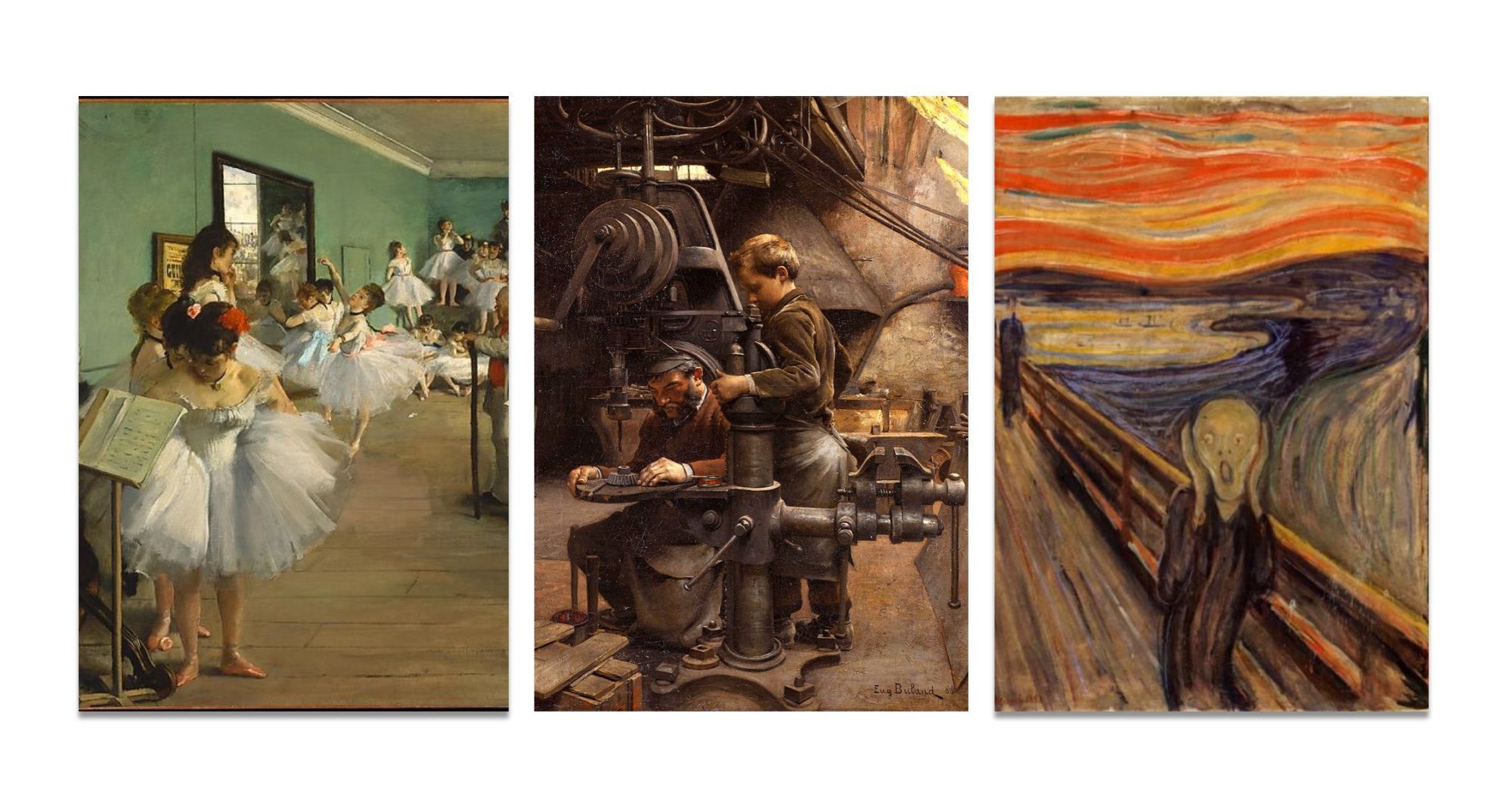Found Drowned
In the distance, one can faintly see the outline of a heavily industrialized south bank. Life and society carries on as an unknown drowned woman is lying underneath of the Waterloo Bridge; a bridge that was well known for illegal suicides at the time. In her hand, the woman holds a heart-shaped locket and her clothes convey poverty (Watts Gallery). With life carrying along so busily, this woman lays poor and dead, unnoticed underneath this bridge.
The 18th and 19th centuries was heavily marked with extreme poverties of the working/lower class and Watts’ painting only further demonstrates this. “Watts has the power to express what is suppressed and hidden, what is beneath the surface of experience” (Corbett). The poverty of this time is definitely some that was greatly suppressed and ignored throughout the Victorian era; the slums that the working class lived in and the ignorance and disapproval of the middle and upper classes was atrocious. The lower class was constantly ignored and moved away into the corners and far reaches of the cities so that they would not be a burden upon the rest of society. The woman underneath the Waterloo Bridge just further demonstrates this. She is removed from the heavily industrialized south bank and removed and forgotten about within society.
Watts “renders the invisible…visible” (Corbett). Many critics have stayed far away from Watts’ work and it was quite difficult to find outside sources on his writing that did not downplay and negatively critique his work. Watts is capable of bringing the negatives of society to light; bring your attention to the problems of the world. With the illuminating of the woman’s face, one can see this. She is marked in poverty and suicide, removed from society, however, her face is lite up, drawing in your attention. This brings to light the problems of society at the time. It was due to this that many critics did not enjoy Watt’s work.

The Awakening Conscience
At first glance of this picture, it is quite obvious that the man has entwined and holding captive the woman. “It is the ‘wealth’ of a ‘patrician’ which makes the woman a ‘victim’” (Landow). With closer analysis, one can fully comprehend that the man in this painting is one of great wealth and that the woman is being held captive by him. Much similar to the cat to the left of the man on the floor toying with a cat, the man is toying with his lover. The woman’s face however, is illuminated as she has just made a great discovery. The expression on her face seems far away as she has just come to terms that she must change; “it is the lover who unintentionally brings about this change in her” (Landow). This change is on of spiritual change.
Many of William Hunt’s paintings were centered on being “more a religious picture than a piece of social commentary” (Landow). While some of his paintings at first seem to deal with social issues, the 19th century was marked with a “revival of religious activity unmatched since the days of the Puritans” and Hunt brought that forth in nearly all of his paintings (Altholz). That is why that the man’s arms, in this painting, are an “embodiment of death from whose arms [the woman] must struggle to reach Christ and new life” (Landow). This revival of religion that is depicted in Hunt’s paintings demonstrates a radical change in behavior that was characterized in all of the classes of the 18th/19th centuries. While more prominently displayed in the upper and middle classes, this change in behavior was known as “Victorainism” and was an infusion of all behavior with moralism (Altholz). The upper and middle class men and women became more conscious of their actions and their connections with God. They wanted to more fully develop their values and this is what is expressed in the woman’s face in Hunt’s painting. She was realizing that she needed to develop a sense of moralism and become one with God. She needed to free herself from her captor’s arms, leave her life of adultery behind, and become a better woman.

Althotz, Josef L. “The Warfare of Conscience with Theology.” Victorian Web. n. page. Web. 18 Sep. 2012. <http://www.victorianweb.org/religion/altholz/a2.html>.
Landow, George P. “Replete with Meaning: William Holman Hunt and Typological Symbolism: The Awakening Conscience.” Victorian Webbook. n. page. Web. 18 Sep. 2012. <http://www.victorianweb.org
Hunt, William Holman. The Awakening Conscience. 1851-53. Oil on Canvas. A Victorian Webbook, Tate Gallery, London. Web. 18 Sep 2012. <http://www.victorianweb.org/painting/whh/replete/P10.html>.
Corbett, David Peters. The World in Paint: Modern Art and Visuality in England, 1848-1914. Manchester Universtiy Press, 2005. 6. eBook.
Watts, George Fredric. Found Drowned. 1848-1850. Oil on Canvas. Weston GalleryWeb. 18 Sep 2012.
